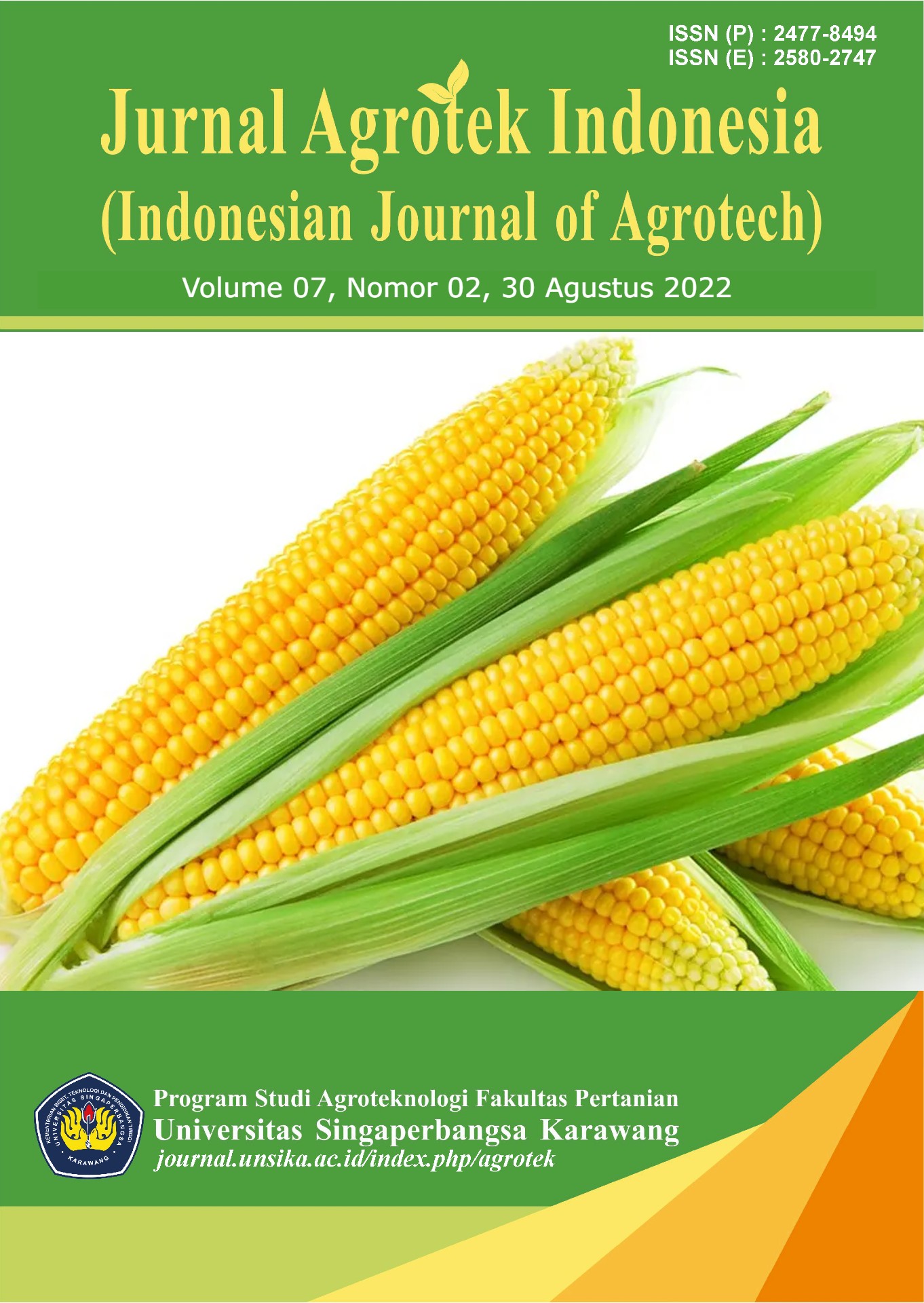Performance of Morphological Characters and Yield of Several Prospective Sweet Corn Hybrids (Zea mays saccharata Sturt) MS-UNSIKA
Abstract
Cultivation of sweet corn in Indonesia is experiencing problems such as productivity that has not been maximized. One of the ways to maximize maize productivity is by assembling superior hybrids. Morphological characters are important to observe because they affect the production and quality of maize yields. The study aimed to obtain the best candidate for MS-UNSIKA sweet corn hybrid based on morphological characters and yields. This research was conducted at Ambu Pusakamulya Gardens, Purwakarta Regency from July to September 2021. This research method was a single factor randomized block design (RBD). The treatment consisted of 33 UNSIKA sweet corn hybrid candidates with 3 comparisons of commercial hybrid Bonanza F1, Talenta F1, and Exotic F1 repeated 3 times. If the results are significantly different, then they are analyzed using the DMRT (Duncan Multiple Range Test) further test at a 5% level. The results of the quantitative character research had a significant effect on the parameters of plant height, stem diameter, number of leaves, the weight of cobs with and without cabbage. There was the best treatment on UNSIKA 3 genotype on plant height (229.60 cm), UNSIKA 9 genotype on many leaves (12.60 leaves), UNSIKA 2 genotype on stem diameter (36.49 mm), UNSIKA 34 genotype on cob weight ( 375.80 g) and UNSIKA 43 genotype on the weight of the cob without shells (256.00 g).
Downloads
Downloads
Published
How to Cite
Issue
Section
License

This work is licensed under a Creative Commons Attribution-ShareAlike 4.0 International License.









